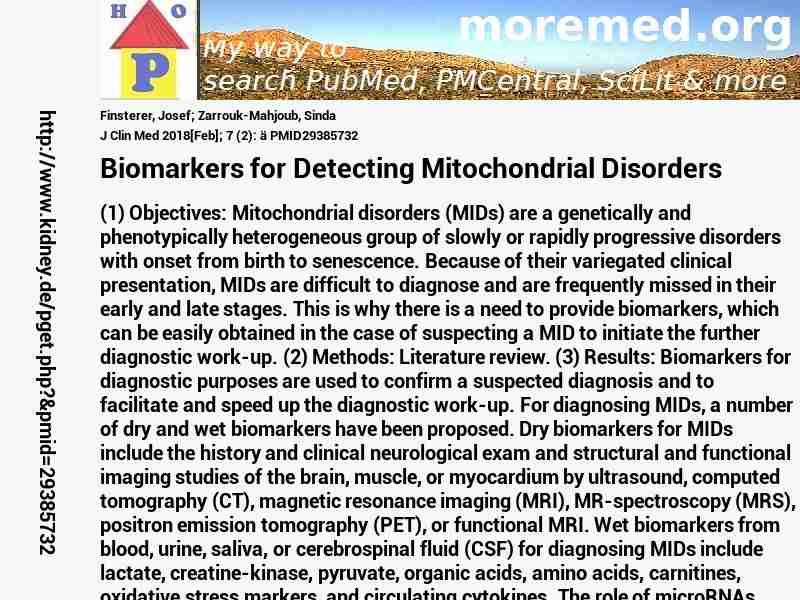
|
10.3390/jcm7020016
http://scihub22266oqcxt.onion/10.3390/jcm7020016

C5852432!5852432!29385732
 free free
 free free
 free free
Warning: file_get_contents(https://eutils.ncbi.nlm.nih.gov/entrez/eutils/elink.fcgi?dbfrom=pubmed&id=29385732&cmd=llinks): Failed to open stream: HTTP request failed! HTTP/1.1 429 Too Many Requests
in C:\Inetpub\vhosts\kidney.de\httpdocs\pget.php on line 215
|  
Warning: imagejpeg(C:\Inetpub\vhosts\kidney.de\httpdocs\phplern\29385732.jpg): Failed to open stream: No such file or directory in C:\Inetpub\vhosts\kidney.de\httpdocs\pget.php on line 117
 J+Clin+Med 2018 ; 7 (2): � J+Clin+Med 2018 ; 7 (2): �
Nephropedia Template TP
gab.com Text
Twit Text FOAVip
Twit Text #
English Wikipedia
|
Biomarkers for Detecting Mitochondrial Disorders #MMPMID29385732Finsterer J; Zarrouk-Mahjoub SJ Clin Med 2018[Feb]; 7 (2): � PMID29385732show ga
(1) Objectives: Mitochondrial disorders (MIDs) are a genetically and phenotypically heterogeneous group of slowly or rapidly progressive disorders with onset from birth to senescence. Because of their variegated clinical presentation, MIDs are difficult to diagnose and are frequently missed in their early and late stages. This is why there is a need to provide biomarkers, which can be easily obtained in the case of suspecting a MID to initiate the further diagnostic work-up. (2) Methods: Literature review. (3) Results: Biomarkers for diagnostic purposes are used to confirm a suspected diagnosis and to facilitate and speed up the diagnostic work-up. For diagnosing MIDs, a number of dry and wet biomarkers have been proposed. Dry biomarkers for MIDs include the history and clinical neurological exam and structural and functional imaging studies of the brain, muscle, or myocardium by ultrasound, computed tomography (CT), magnetic resonance imaging (MRI), MR-spectroscopy (MRS), positron emission tomography (PET), or functional MRI. Wet biomarkers from blood, urine, saliva, or cerebrospinal fluid (CSF) for diagnosing MIDs include lactate, creatine-kinase, pyruvate, organic acids, amino acids, carnitines, oxidative stress markers, and circulating cytokines. The role of microRNAs, cutaneous respirometry, biopsy, exercise tests, and small molecule reporters as possible biomarkers is unsolved. (4) Conclusions: The disadvantages of most putative biomarkers for MIDs are that they hardly meet the criteria for being acceptable as a biomarker (missing longitudinal studies, not validated, not easily feasible, not cheap, not ubiquitously available) and that not all MIDs manifest in the brain, muscle, or myocardium. There is currently a lack of validated biomarkers for diagnosing MIDs.�
  
DeepDyve
Pubget Overpricing | 
|